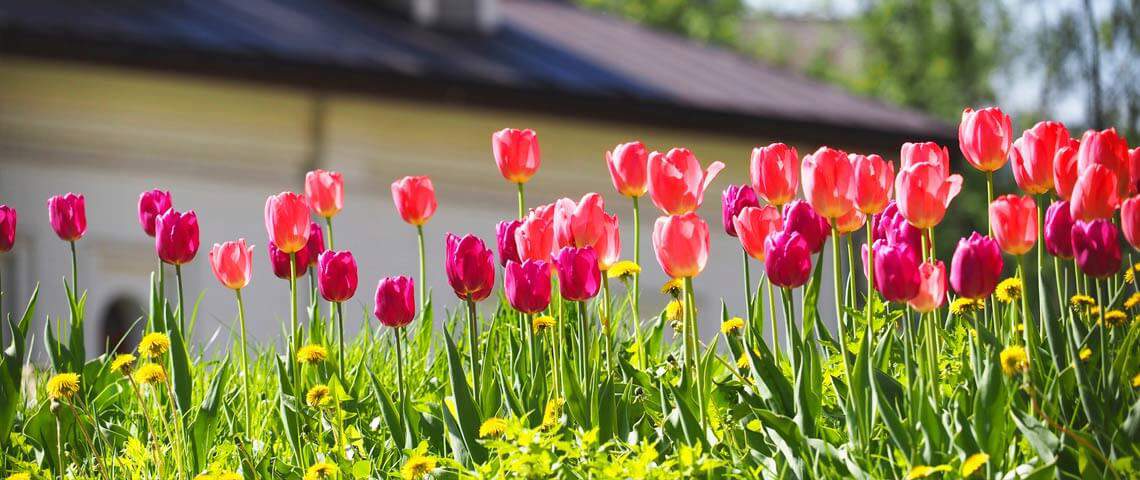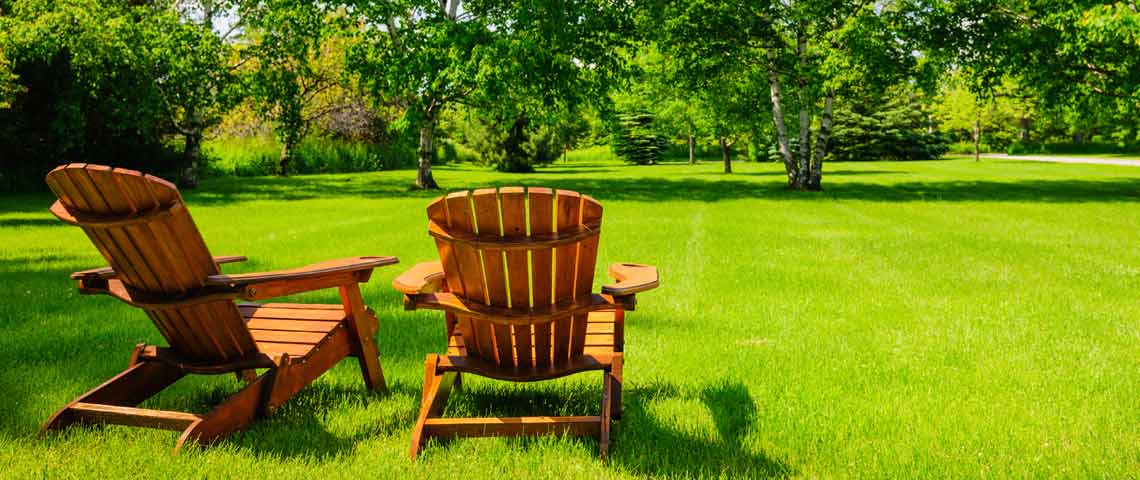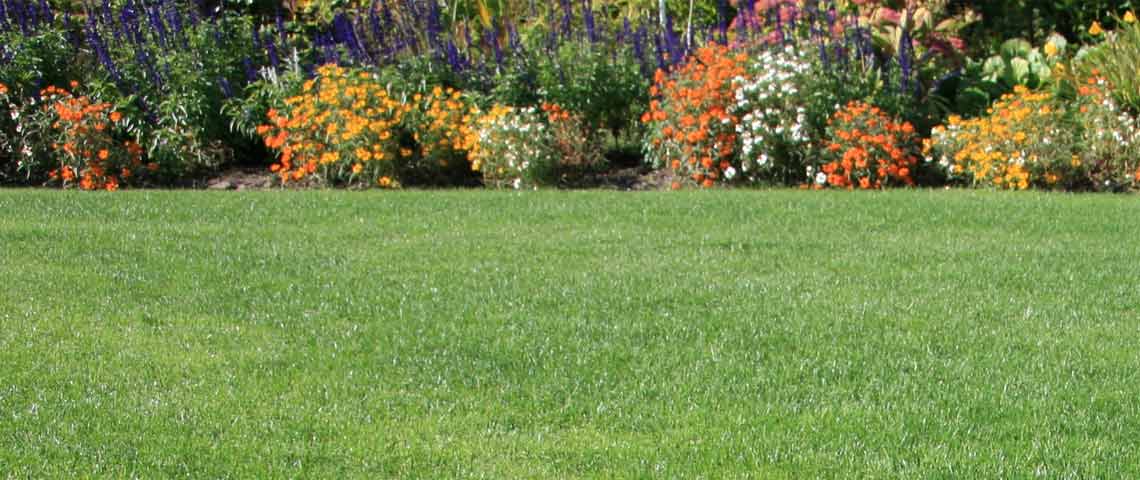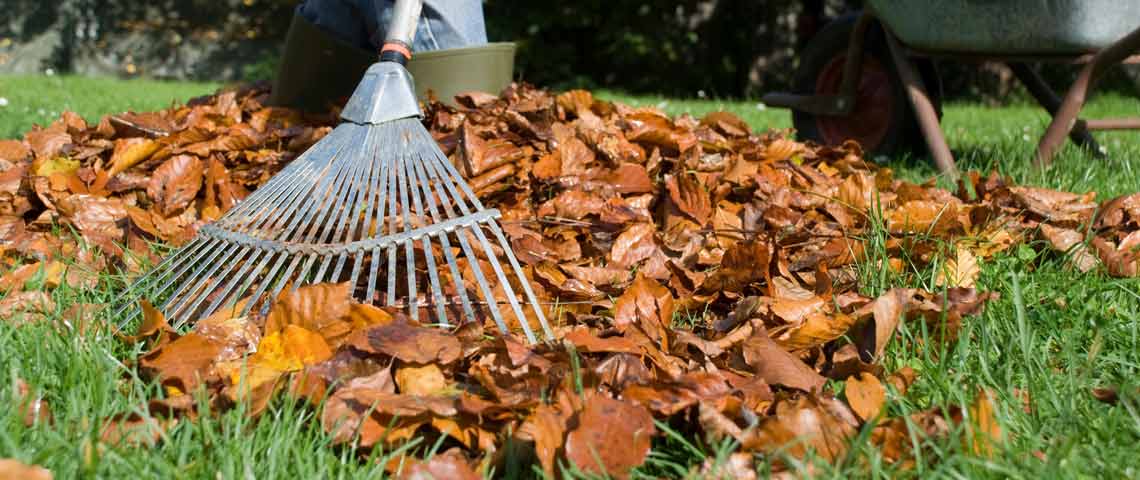Spring Care Tips for Northern and Southern Lawns
Spring lawn care sets the stage for your lawn's beauty and performance through the growing season. When you've set your sights on a thick, green lawn your neighbors will admire, achieving that goal starts with spring care. Have your mower blades sharp and lawn tools prepped for the season. Then dive into spring with these timely lawn care tips for northern or southern lawns:

Adjust irrigation to accommodate spring rains.
Spring Tips for Northern Lawns
When spring arrives in northern climates, lawn care shifts into high gear. Common cool-season lawn grasses such tall fescue, Kentucky bluegrass and perennial ryegrass enter one of their peak growth periods of the year. These northern lawn care tasks can take your lawn from early to late spring with optimized beauty and health:
- Flush lawn areas affected by de-icing salts or dog urine once soil thaws enough that water drains well. Salts from de-icers and pet urine can accumulate in soil and damage grass and other plants. By flushing soil thoroughly with hose water, you help move salt out of the root zone and reduce lawn damage.
- Fight lawn disease by raking lawn areas once your soil and grass dry out slightly. This removes dead grass and debris, improves air circulation, helps soil warm faster, and protects against damage from snow mold and other common lawn diseases.
- Start mowing once your grass shows active growth. Timing varies from year to year, depending on your region's weather, so watch for signs of fresh green growth. For your first spring mowing, cut slightly lower than your grass's normal mowing height. Bag your clippings for the first few mowings if you suspect winter-related fungal disease.
- Apply pre-emergent herbicides such as crabgrass preventers to established lawns before weed seeds germinate. This typically happens when soil temperatures warm to near 55 degrees Fahrenheit. Most lawn and garden stores carry inexpensive soil thermometers to help you track temps. Your local county extension agent can also help with guidance for your area. Pre-emergents can inhibit grass seeds as well as weed seed, so always wait at least 60 days and two mowing's before seeding areas treated with pre-emergent herbicides.

Deal with post-winter lawn diseases now to prevent future problems.
- Patch and repair bare lawn spots damaged by pets, voles, winter salts or snow removal. Pennington Smart Patch II mixes combine premium Smart Seed grass seed with professional-grade fertilizer and natural mulch for fast, simple lawn repairs before summer heat sets in.
- Seed new areas or overseed thin lawns during spring's peak growth for fast germination and establishment along with thicker, lusher grass. Pennington Lawn Booster provides everything you need to thicken thin lawns—premium seed, fertilizer and soil enhancer—in one convenient, easy-to-use product.
- Apply post-emergent weed & feed products to kill broadleaf weeds and fertilize established lawns. Wait until grass and weeds are actively growing, but treat while weeds are still vulnerable and small. Don't treat any newly seeded areas until grass gets established and you've mowed it at least two to three times.
- Feed your lawn with a high-quality lawn fertilizer if not using weed & feed. Pennington Full Season Lawn Fertilizers provide extra iron for rich green color along with fast- and slow-release nitrogen to feed your lawn for up to four months.
- Supplement rainfall by watering, only as needed, so your lawn gets the equivalent of about 1 inch of precipitation per week. Once established, water-conserving Pennington Smart Seed grasses stay green for up to three weeks without watering and need up to 30 percent less water than ordinary grasses.
- Treat common lawn pests such as grubs, especially in areas with a history of lawn insect damage. Japanese beetle larvae known as white grubs overwinter deep in soil and return to feed on grass roots—close to the surface and vulnerable to treatment—in spring.
Spring Tips for Southern Lawns
In southern lawns, spring lawn care builds slowly. Common warm-season lawn grasses, such as Bermudagrass or Zoysia grass, are just beginning to exit dormancy on their way to greening up. These springtime tasks for southern lawns can help your lawn move from early to late spring so it's ready and positioned for the surge of summer growth:
- Mow your lawn once in early spring, before green up. Mow slightly shorter than your grass's recommended mowing height, and rake to remove any dead grass or debris. This improves air circulation to fight fungal lawn disease and exposes soil to help it warm faster. If you overseeded for winter color, continue your regular lawn care schedule.
- Spot-treat tenacious weeds early in spring while your warm-season grasses are still dormant and brown. Weeds steal resources away from grass, and they leave seeds behind. Green, actively growing weeds stand out against dormant grass, making targeted spot treatments swift and simple.
- Apply pre-emergent herbicides, such as crabgrass preventers, to established lawns before summer weed seeds can germinate. Crabgrass seed germinates when soil temperatures hit 55 degrees Fahrenheit for several days. In southern lawns, pre-emergent season can start in mid-February. If you're unsure of timing in your area, check with your local extension agent. An inexpensive soil thermometer, available at most lawn and garden stores, also helps.
- Watch for early spring lawn pests such as destructive mole crickets, which emerge and mate as soon as soil starts to warm. Treat these lawn pests now and again in late spring when newly hatched nymphs are most susceptible to treatment.

Start spring with sharp, clean mower blades.
- Start regular mowing once your grass starts growing. Most warm-season lawn grasses enter active growth around the time that soil temperatures warm to 65 degrees Fahrenheit. Mow slightly shorter at first, then raise your mower blades to normal mowing height. Bag and dispose of your clippings if you have signs of fungal lawn disease.
- Repair bare lawn spots or pet urine damage once warm-season grasses are in active growth. Pennington Smart Patch II Bermudagrass Mix combines premium grass seed, professional fertilizer and natural mulch all in one simple product that repairs bare lawn spots fast. You'll see growth as soon as 7 days and full results as soon as 22 days.
- Plant grass seed to start new lawns or overseed existing thin lawns in late spring to capitalize on the natural growth cycle of warm-season grasses. Wait until all threat of a late spring frost has passed. Pennington Smart Seed Bermudagrass Grass Seed and Fertilizer Mix needs less water than ordinary grasses, once established. You conserve water and your lawn stays healthy and beautiful.
- Aerate and dethatch warm-season lawns to coincide with peak growth, after spring green-up happens and summer is set to begin. Don't rush these tasks or you'll damage grass. Late-spring aeration and dethatching help improve soil compaction, water drainage and water penetration, which encourages healthier, better root growth.
- Water your lawn so it gets about 1 to 1 ¼ inches of weekly water, from rainfall and irrigation combined. Don't leave your sprinkler on automatic. Deep, infrequent watering encourages deeper, more resilient root growth. Shallow, frequent watering does the opposite.
- Feed your lawn with high-quality lawn fertilizers and lay out a regular feeding schedule for the summer growing season. Pennington Full Season Lawn Fertilizers contain iron along with fast- and slow-release nitrogen for fast greening and extended feeding for up to four months
By stepping up your springtime lawn care and covering these simple tasks, you can help ensure your lawn stays thick, healthy and resilient through the months ahead. Pennington is committed to providing you with the finest in premium grass seed and lawn care products so you can enjoy spring and a lawn you're proud to call your own.
Always read product labels thoroughly and follow instructions.
Pennington with design, One Step Complete, Smart Seed and Water Star are registered trademarks of Pennington Seed, Inc.




